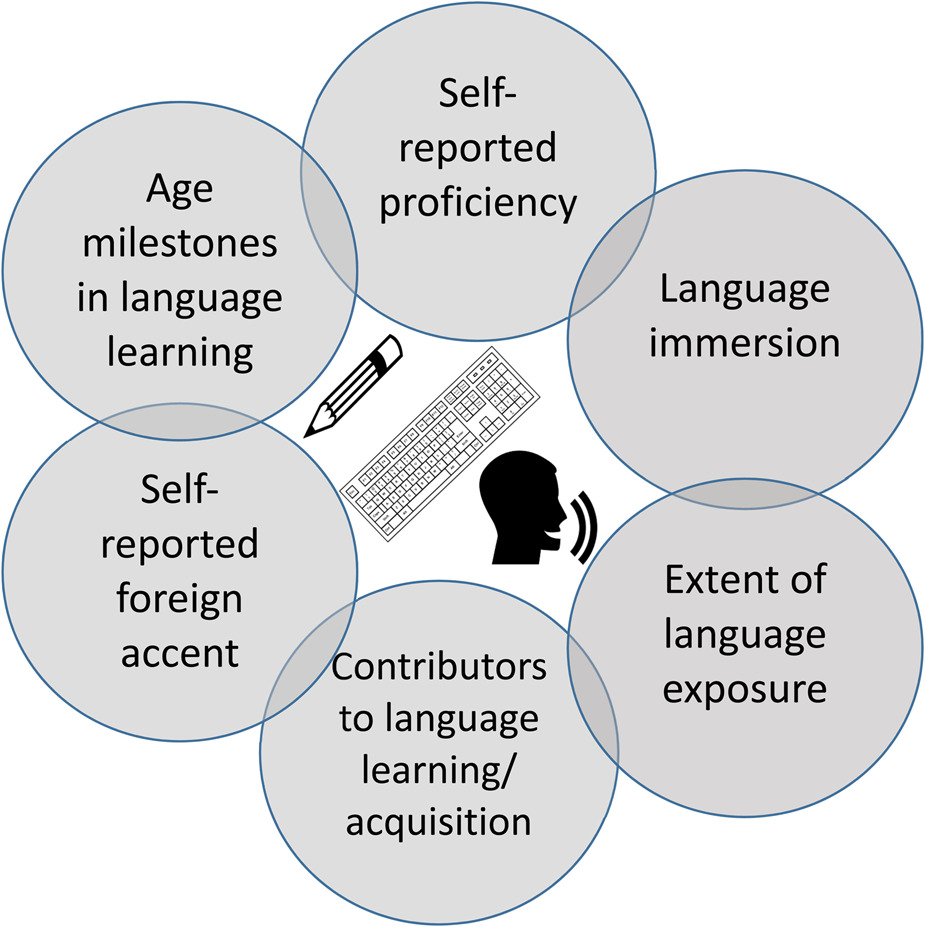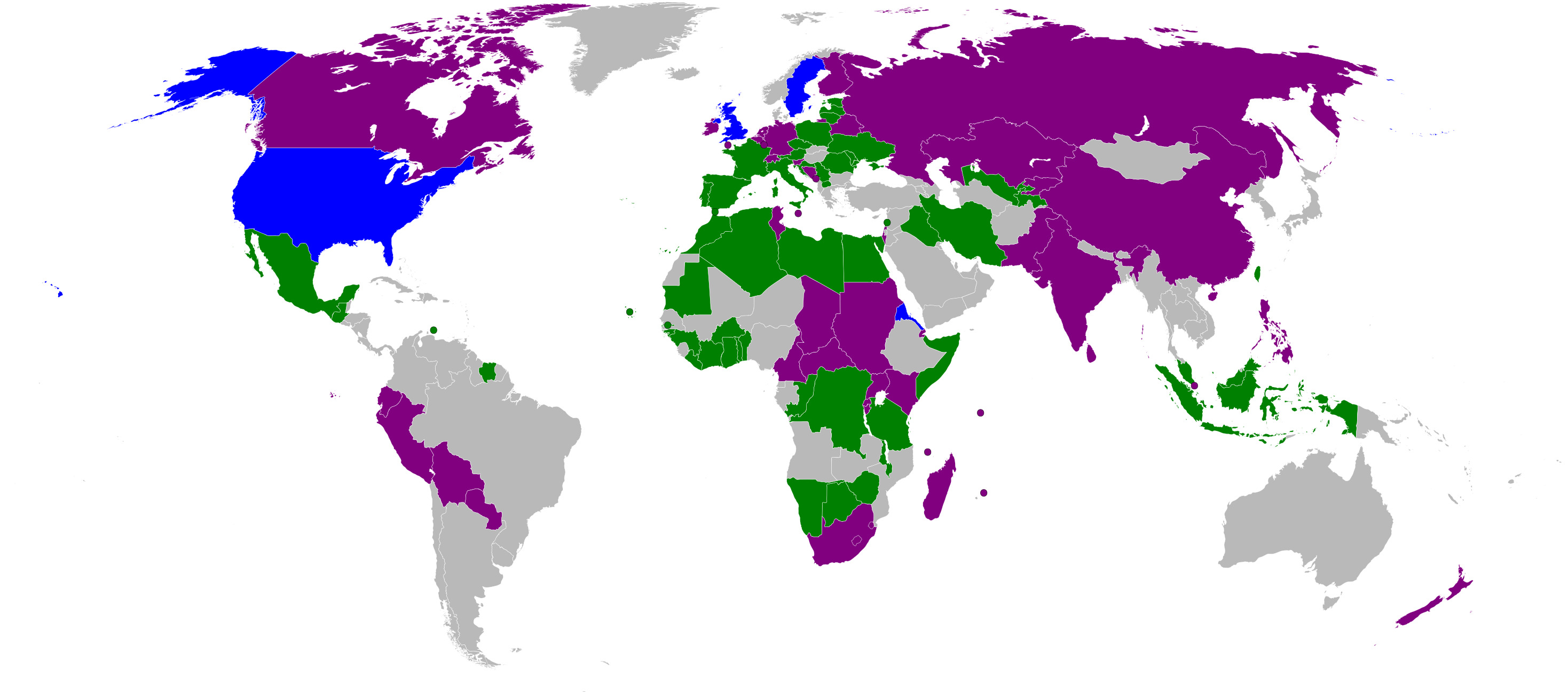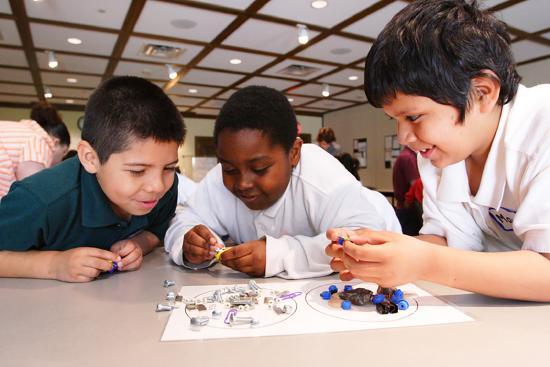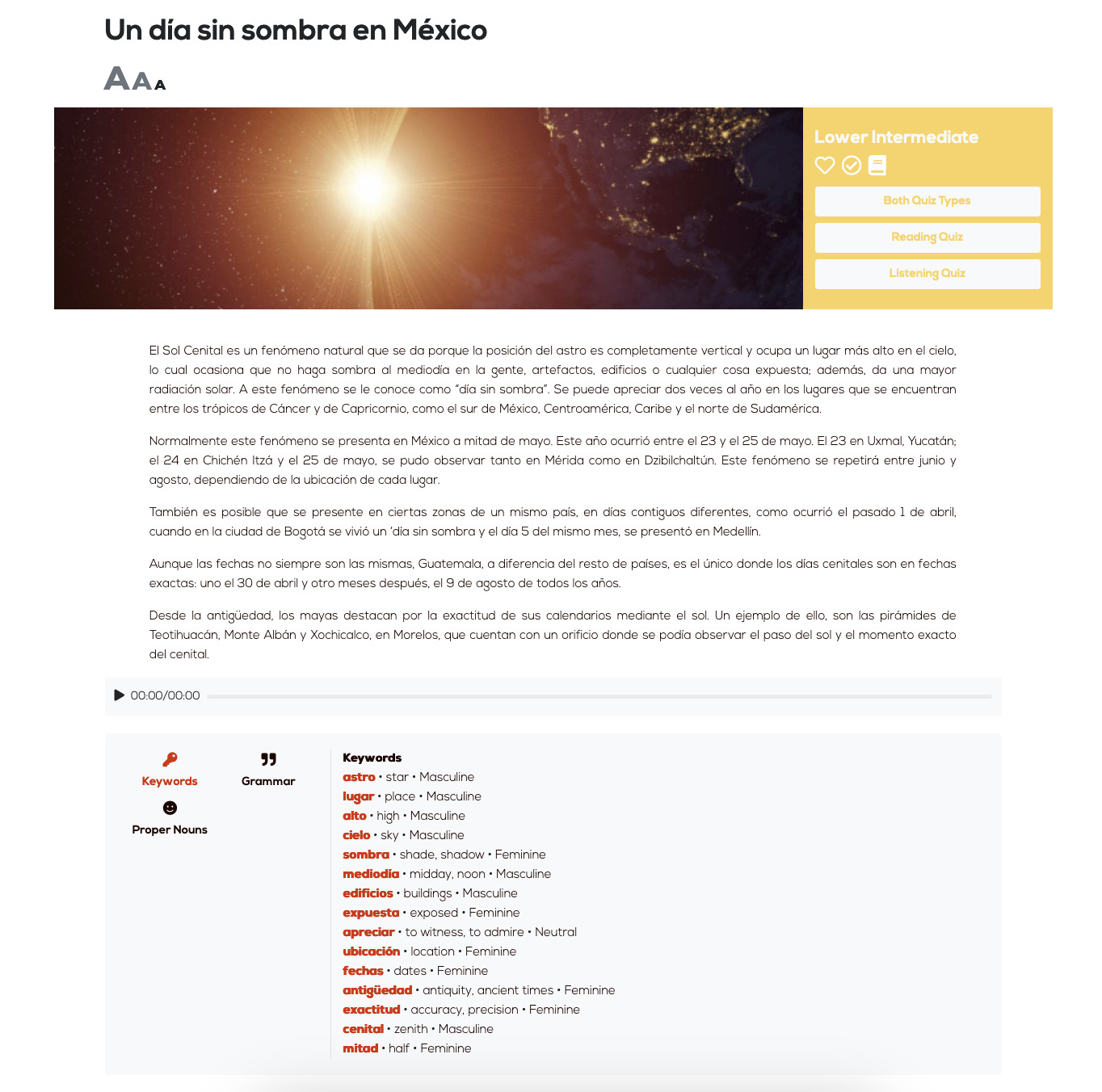What Percentage of the World’s Population is Bilingual?
Introduction to Bilingualism: Exploring the Global Language Diversity
In this captivating journey, we delve into the fascinating world of bilingualism and explore the percentage of individuals worldwide who speak more than one language. From uncovering the advantages and benefits of bilingualism to exploring the cognitive, social, and economic impacts, we shed light on the significance of being bilingual in today's interconnected world.
Join us as we navigate through various regions, factors and trends that influence bilingualism, and discover how language acquisition, educational programmes and technological advancements shape the bilingual experience.
So, whether you are a language enthusiast, a student, or simply curious about the global linguistic landscape, join us on this captivating exploration of bilingualism and its impact on our interconnected world.
The Importance of Bilingualism: Advantages and Benefits
Bilingualism offers a multitude of advantages that extend beyond the realm of language itself. In this section, we explore the various benefits that bilingualism brings, ranging from cognitive development to improved health outcomes and enhanced language acquisition abilities.
Top 5 Benefits of Bilingualism
1. Cognitive development
Bilingualism has been linked to enhanced cognitive abilities and mental flexibility. Research shows that bilingual individuals often exhibit stronger problem-solving skills, improved memory, and enhanced executive functions. The constant mental juggling between two languages strengthens the brain's ability to focus and switch attention. These cognitive benefits can extend to various areas of life, including academic performance and professional success.

Language learning is great for cognitive development.
2. Social-emotional development, diversity and integration
Bilingualism fosters social and emotional development by enabling individuals to engage with different cultures and communities. Bilingual individuals can connect with people from diverse backgrounds, which promotes empathy, cultural understanding and tolerance. Moreover, bilingualism enhances communication skills and facilitates smoother interactions in multicultural settings. This linguistic versatility allows individuals to bridge cultural gaps and form meaningful connections, contributing to a more inclusive and integrated society.
3. Economic advantage
Proficiency in multiple languages opens doors to a wide range of economic opportunities. In an increasingly globalised world, businesses and organisations value employees who can effectively communicate and connect with international markets. Bilingual individuals have a competitive edge in the job market, as they can engage with clients, customers, and colleagues from different linguistic backgrounds. Studies have shown that bilingual employees often earn higher salaries, have access to a broader range of job prospects, and are more likely to succeed in international business ventures.
4. Health benefits
Emerging research suggests that bilingualism may have positive effects on brain health and resilience against cognitive decline. Bilingual individuals may experience delayed onset of age-related neurodegenerative diseases such as Alzheimer's. The constant mental stimulation involved in switching between languages may contribute to increased neural plasticity and cognitive reserve, which can help protect against cognitive decline. Additionally, being bilingual can enhance overall cognitive abilities and promote a lifelong habit of learning, curiosity and intellectual engagement.
5. Facility to learn more languages
Bilingual individuals often possess a unique advantage when it comes to acquiring additional languages. The skills and strategies developed through bilingualism, such as language awareness, code-switching abilities, and an understanding of language structures, make it easier to learn new languages. Bilinguals are more attuned to language nuances and have a heightened sensitivity to language patterns, enabling them to grasp new linguistic systems with greater ease. This facility to learn languages opens doors to broader cultural experiences and further expands an individual's communicative abilities.
Methodology and Data Sources: How Bilingualism is Measured
The measurement of bilingualism is a complex task due to the variability in scholarly perspectives and individual language experiences. Defining what makes someone bilingual and identifying the linguistic qualities and abilities required to be considered bilingual can vary. However, a common understanding is that bilingualism refers to individuals who can use two languages in their everyday lives.
Let’s look at two examples. I have a friend who studied Chinese throughout high school and university. They continue to write and read Chinese to an extremely high level, however, do not possess fluency in Chinese speaking or listening. Another of my friends has Chinese parents and always spoke Chinese at home growing up. Although they maintain an extremely high level of Chinese speaking and listening, they struggle to read or write in Chinese. These examples show the difficulty in assessing bilingualism and a lack of clarity across different measures of assessment. Who, in the examples, is more fluent in Chinese? Naturally, socioeconomic and cognitive factors, as well as educational background also affect bilingualism.
To address the need for reliable measures of bilingualism, various tools and questionnaires have been developed. One such tool is the Language Experience and Proficiency Questionnaire (LEAP-Q), which was created to cater to the increasingly linguistically diverse scientific landscape. The LEAP-Q assesses individuals' language experiences, proficiency, and usage across different contexts, providing valuable insights into their bilingual abilities.

LEAP-Q. Source: Cambridge University Press.
In addition to the LEAP-Q, other labs and researchers worldwide have developed similar self-report questionnaires to quantify bilingualism. The Language History Questionnaire (LHQ) is a commonly used tool that captures individuals' language background and history.
By utilising various measurement tools and considering individual language backgrounds and experiences, researchers strive to capture the nuances of bilingualism. These methodologies help shed light on the intricate nature of bilingual abilities and contribute to a deeper understanding of bilingualism. That said, there is a need for greater transparency between reporting methods and further research in countries or regions where there is a lack of funding and/or accessibility challenges.
Bilingualism vs. Multilingualism
Bilingualism refers to the ability to speak and understand two languages, while multilingualism encompasses the use of more than two languages by an individual or a community of speakers. In recent times, the definition of bilingualism has evolved to include individuals who use two languages or dialects in their everyday lives. Whereas multilingualism refers to people who use three or more languages or dialects in everyday life.
How many people in the world are bilingual?
43% of the world's population is bilingual, according to Journal of Neurolinguistics, meaning almost half of all people utilise two languages daily. 40% of the world’s population is monolingual, using just one language. 17% of the world’s population is multilingual, or fluent in two or more languages. This highlights the prevalence of bilingualism and multilingualism on a global scale.
How many people in the US are bilingual?
There are 67.3 million people in the US who are bilingual or multilingual, according to the Center for Immigration Studies, or 20.6% of the population. For the purposes of this statistic, an individual is considered multilingual if they report speaking a language other than English at home and characterise themselves as speaking English "well" or "very well”.
Global Bilingualism Trends: Analysing the Numbers and Statistics
Understanding the prevalence and patterns of bilingualism on a global scale is crucial for unravelling the complexities of language diversity. Let's explore some key statistics that shed light on the global landscape of bilingualism:
1. 43% of the global population is bilingual
Almost half of all people in the world are bilingual or multilingual, indicating a significant portion of individuals who can effectively communicate in more than one language. This statistic emphasises the widespread nature of bilingualism and its prevalence across various regions.
2. The European Union has 24 official languages
The European Union (EU) stands as a testament to multilingualism with its 24 official languages. This linguistic diversity reflects the cultural richness and integration efforts within the EU member states, where multiple languages coexist and shape the continent's linguistic landscape.
3. The World Health Organization (WHO) recognises six official languages
Arabic, Chinese, English, French, Russian, and Spanish are the official languages of the WHO. These languages were established as WHO policy through a 1978 World Health Assembly resolution. Since a 1998 resolution, all Governing bodies' documents and corporate materials have been made available online in all official languages.
4. UNESCO classifies 2,449 languages as endangered
These languages account for approximately one-third of all languages in the world. This sobering statistic highlights the importance of language preservation efforts to safeguard linguistic diversity and cultural heritage. With over 8,324 languages spoken globally, each language represents a unique means of communication and cultural expression.
5. The United States Census Bureau has been collecting language data since 1980
As of 2009, approximately 20% of Americans reported speaking a language other than English at home. While this figure provides an estimation of bilingual speakers in the United States, it's important to note that the census does not explicitly address bilingualism, making it necessary to consider multiple language-related questions to gauge bilingualism accurately.
By examining examples such as the United States and Switzerland, we gain insight into how different countries approach bilingualism in their census and surveys. For instance, the United States asks three language-related questions that allow for a reasonable estimation of bilingual individuals. In contrast, Switzerland has a more restrictive view of bilingualism, impacting the number of bilinguals reported in their census.
6. It is challenging to obtain accurate global bilingualism data
While statistics provide valuable insights, measuring global bilingualism accurately poses challenges. Linguist Mikael Parkvall from Stockholm University encountered difficulties in obtaining reliable data on global bilingualism. The available numbers cover only around 15% of the world's countries and less than one-third of the global population. This limited data makes it challenging to have a comprehensive understanding of the global distribution of bilingual speakers.
These statistics and examples highlight the complexity of measuring global bilingualism accurately and the need for comprehensive and standardised methodologies to capture the true extent of bilingualism worldwide. Nonetheless, they underscore the importance of recognising and embracing the linguistic diversity that exists across the globe.
Bilingualism by Region: Spotlight on Multilingual Communities
Language diversity manifests in various regions around the world, resulting in multilingual communities that enrich cultural interactions and societal dynamics. Let's explore some fascinating insights about bilingualism and multilingualism across different regions:
1. Bilingual and Multilingual Countries
There are 55 bilingual countries globally, where two languages hold official status. Examples of officially bilingual countries include Canada (English and French) and Belgium (Dutch, French, and German). Additionally, there are numerous multilingual countries such as Singapore, South Africa, and Switzerland, where multiple languages are spoken within their borders.

Purple: multiple official languages. Green: single official language. Blue: no official language, functionally multilingual.
2. Indonesia: The Largest Bilingual Country
Indonesia stands out as the largest bilingual country worldwide, with an estimated 200 million people speaking more than one language. Indonesians communicate in approximately 746 different languages, showcasing the incredible linguistic diversity within the country.
3. Bilingualism and Multilingualism as the Norm
Contrary to common belief, the majority of the world's population is bilingual or multilingual. Monolingualism is characteristic of only a minority of individuals. According to figures, approximately 5,000 to 8,000 different ethnic groups reside in around 160 nation-states. Scholars estimate that these nation-states are home to over 5,000 distinct languages. These statistics indicate that few nations are monolingual, as diverse language groups coexist and use languages other than the national language in their daily lives.
4. Mixing Languages
Bilinguals often mix their two languages during conversations, a phenomenon that raises intriguing questions about how the brain functions in such exchanges. The blending of languages reflects the fluidity and flexibility of bilingual individuals, highlighting their unique linguistic abilities and the complex mechanisms underlying language processing.
5. Language Learning Trends
Certain regions exhibit notable language learning trends. For example, California in the United States records a high volume of searches related to learning a language, reflecting a strong interest and engagement in language acquisition within the state. In the United Kingdom, the younger population (aged 16-24) demonstrates higher bilingualism rates compared to other age groups. Cities like Belfast and Brighton boast a larger number of bilingual speakers compared to other cities in the UK, illustrating the multilingual diversity within specific urban centres.
The exploration of bilingualism and multilingualism across different regions underscores the significance of language diversity in shaping societies. From officially bilingual countries to regions with rich linguistic tapestries, language use extends beyond national boundaries and influences daily interactions, cultural exchanges, and individual identities. Understanding the linguistic dynamics of various regions deepens our appreciation for the ways in which language plays a vital role in global communication and interconnectedness.
Factors Influencing Bilingualism: Cultural, Educational, and Socioeconomic Aspects
Bilingualism is shaped by a variety of factors, including cultural, educational, and socioeconomic influences. Understanding these factors provides valuable insights into the complex dynamics that contribute to bilingual language acquisition. Let's explore some key points:
1. Input, Language Status, and Access to Literacy
The language input received during childhood plays a critical role in bilingual language development. Factors such as language status within the community and access to literacy resources influence the quantity and quality of language exposure. Children who grow up in environments where both languages are valued and actively used tend to have stronger bilingual language skills.

2. Socioeconomic Status (SES)
Socioeconomic factors can significantly impact bilingual language development. Research indicates that children from low socioeconomic backgrounds often exhibit lower language skills and academic performance compared to their peers. These disparities can be observed as early as 18 months of age. SES influences the language input and resources available to children, affecting their language development.
Socioeconomic factors intersect with bilingualism in complex ways. For example, in the United States, statistical data from 2019 shows that 51% of Tagalog speakers and 54% of Chinese speakers held a bachelor's degree or higher. In contrast, only 17% of Spanish speakers in the same study group had achieved a bachelor's degree or higher. Additionally, a significant proportion (33%) of Spanish speakers did not graduate from high school, marking the highest share among the five most spoken languages other than English. These disparities highlight the influence of socioeconomic factors on educational attainment among bilingual communities.
3. Language Environment
When studying bilingual children, it is crucial to consider the language environment within the home. Bilingual children navigate multiple languages within their immediate surroundings, which influences their language proficiency and language use patterns. The language choices made by parents, the presence of extended family members and the language practices within the community all shape the bilingual development process.
By considering cultural, educational, and socioeconomic aspects, we gain a deeper understanding of the complex interplay of factors that shape bilingualism. Recognising the role of language input, community support, socioeconomic disparities, and educational opportunities can help inform interventions and policies that support bilingual language development. By addressing these factors, we can strive for inclusive and supportive environments that foster the growth and success of bilingual individuals and communities.
Bilingualism and Language Acquisition: The Role of Early Childhood Education
Parents raising bilingual children play a vital role in fostering successful bilingual development by ensuring ample opportunities for their children to hear and speak both languages. However, bilingualism can be achieved at any stage of life, whether as a child, adolescent, or adult.
While research has primarily focused on childhood bilingualism, particularly simultaneous language acquisition, it's important to remember two key points. First, bilingualism is just one pathway to promote successful early development, and there are various ways to support children's growth. Second, second language learning is possible at any age, emphasising that language, regardless of when acquired, serves as a gateway to the world.
Rather than holding back due to limited fluency or comfort in a specific language, parents should provide ample input and interaction in a language they are comfortable with. By embracing language as a powerful tool for communication and connection, parents can nurture their children's language skills and support their overall development.
Bilingualism and Economic Opportunities: Job Prospects and Global Markets
Bilingualism presents numerous advantages in terms of job prospects and global market engagement:
- 54% recognise the importance of knowing another language in their current employment.
- 35% cited future job prospects as their motivation to use language-learning software.
- Speaking a foreign language can boost your salary by 11-35%, depending on the language and country of employment.
- The COVID-19 pandemic has created new language utilisation opportunities in the workplace through remote working.
- Bilingual and multilingual individuals are shown to be better at problem solving and display enhanced creativity and empathy. These are invaluable soft skills for employees.

Bilingualism in the Digital Age: Technological Impacts on Language Learning
The digital age has revolutionised language learning, offering a myriad of opportunities and advancements for bilingualism. The following are key aspects of how technology has influenced language acquisition:
- Global Connectivity: With the ability to speak both Spanish and English, a bilingual individual can comprehend one out of every three people who connect to the internet.
- Remote Work Opportunities: The COVID-19 pandemic has accelerated the adoption of remote work, creating more possibilities for bilingual individuals to leverage their language skills.
- Enhanced Language Learning Access: Technology has made language learning more accessible than ever. Learners have better access to language resources, including online courses, language learning apps, and ready-made lessons tailored to their specific needs. These digital tools offer flexibility, convenience, and personalised learning experiences.
- Increased Engagement and Motivation: Technological innovations have transformed language learning into an engaging and interactive experience. Gamification elements, such as challenges, rewards, and progress tracking, motivate learners to actively participate and persist in their language learning journey. This gamified approach promotes continuous engagement and progress.
While technology has brought numerous benefits to bilingualism and language learning, it is essential to be mindful of potential pitfalls:
- Over-Reliance on Technology: Excessive dependence on technology may hinder language learners from fully engaging with real-world language interactions and limit their ability to adapt to different contexts.
- Lack of Human Engagement: Language learning is enriched through meaningful human interactions. Exclusively relying on technology may diminish opportunities for authentic conversations, cultural immersion, and social connections, which are integral to language acquisition.
- Limited Cultural Exposure: Language learning goes beyond mere linguistic proficiency; it involves understanding and appreciating diverse cultures. Technology should be complemented with efforts to actively seek cultural experiences, fostering a deeper understanding of the communities associated with the target language.
By leveraging the benefits of technology while being aware of its limitations, individuals can harness the power of digital resources to enhance their bilingualism and create immersive language learning experiences.
Where The Chairman’s Bao and Newsdle come in
We created The Chairman’s Bao (TCB - 2015) and Newsdle (2021) to make it easier and more accessible for students to study news-based current affairs and cultural insights in Chinese, Spanish and French. We publish new lessons each day, year-round and technology allows us to provide a host of features to promote understanding and retention. Through our websites and mobile apps, students globally can now study with convenience and we have broken down many of the barriers to traditional, rote-learning language study. If you study Chinese, Spanish and/or French, be sure to check out TCB and Newsdle!

Newsdle Spanish news-based lesson.
Language Preservation and Endangered Languages: Bilingualism as a Solution
The threat of language extinction is a pressing concern. Researchers like Ranka Bjeljac-Babic and Michael Krause have estimated that more than 10 languages are dying each year and that 50-90% of the world's spoken languages may disappear during the twenty-first century. This rapid decline emphasises the urgency of preserving endangered languages.
Bilingualism offers a promising solution to language preservation. When individuals are proficient in both their heritage language and a dominant language, they can actively participate in language revitalisation efforts and pass down their linguistic and cultural knowledge to future generations.
Technology has also become a valuable tool in language preservation efforts. Digital platforms enable the recording and study of endangered languages.
Did you know…? Over 1.5 million people study the Welsh language through the app Duolingo?
Bilingualism in Education: Multilingual Schools and Language Programs
Bilingualism plays a significant role in education, and there are various programs and initiatives that promote multilingualism in schools. One such approach is the establishment of heritage or bilingual schools. These schools focus on providing education in multiple languages, catering to students who come from diverse linguistic backgrounds. By offering instruction in both their native language and the dominant language of the region, these schools aim to preserve cultural heritage while promoting academic success. As of 2022, there were over 3,000 dual-language programmes in the US.
Another noteworthy development in the realm of bilingual education is the Global Seal of Biliteracy. This initiative recognises and validates the language proficiency of students in multiple languages. Several states and districts have adopted similar rules and criteria to award the seal and colleges and universities have begun acknowledging its significance. In fact, a survey conducted among employers revealed that 66 percent of them would prefer to hire applicants who possess the Global Seal of Biliteracy, recognising the value of bilingualism in the workforce.
These efforts in bilingual education not only celebrate linguistic diversity but also acknowledge the advantages that come with being proficient in multiple languages. They provide students with a strong foundation in different languages, equipping them with valuable skills that can enhance their academic and career prospects. By embracing multilingualism in educational settings, we can foster a more inclusive and globally connected society.
Future Trends in Bilingualism: Projections and Predictions
The future of bilingualism holds exciting possibilities and significant implications for individuals and society as a whole. As the world becomes increasingly interconnected, being bilingual or multilingual is expected to play a crucial role in various aspects of life, including education and employment. The demand for bilingual individuals is expected to rise due to the evolving nature of jobs, which are becoming more tech- and service-based.
Artificial Intelligence (AI) is also anticipated to play a role in the future of bilingualism. Advancements in technology, including machine translation and language learning applications, are making language acquisition more accessible and efficient. AI-powered language learning tools can provide personalised learning experiences, adaptive feedback, and immersive language practice, revolutionising the way individuals acquire and develop bilingual skills.
Future trends in bilingualism are likely to involve multi-modal learning approaches. This refers to the integration of various modes of communication, such as spoken language, written text, visuals and gestures, to enhance language learning. By incorporating different modalities, learners can engage more actively with the language and develop a deeper understanding of its cultural nuances, leading to more effective language acquisition and communication.
Overall, the future of bilingualism is promising, with increasing recognition of its value in a globalised world. As technology continues to advance and educational approaches evolve, we can expect new opportunities and innovative methods to support and enhance bilingual language acquisition.
Conclusion: Embracing Bilingualism for a Globalised World
By understanding the factors that influence bilingualism, such as cultural, educational, and socioeconomic aspects, we gain insights into the complexities of language acquisition and the importance of creating supportive environments for bilingual individuals.
We have examined the cognitive, social, and economic advantages that bilingualism offers, from enhanced problem-solving skills to increased job prospects and economic opportunities. We have also explored the role of technology in language learning, as well as the importance of language preservation efforts in the face of endangered languages.
Embracing bilingualism not only opens doors to new opportunities but also fosters cultural understanding, empathy, and connections across borders. So, let us celebrate the beauty of language diversity and continue to explore the rich tapestry of bilingualism in our global society.
Author:

Sean McGibney speaking to students at Beths Grammar School about his experience of learning Chinese, living in China and founding Newsdle and The Chairman’s Bao.
Sean studied Chinese and Spanish at University of Leeds and founded The Chairman’s Bao alongside Tom Reid in his final year of study in 2015. Current Managing Director of The Chairman’s Bao, he has overseen the company’s growth from university bedroom concept to an international force in the EdTech industry with over 200,000 individual users and over 400 global partner institutions. Sean also launched Newsdle alongside Tom Reid and Oliver Leach in 2021, for students and teachers of Spanish and French. In his spare time, Sean is still a keen language learner and runner. He also sits on the Board of charity Leeds Irish Health and Homes in the UK.
Sources:
- New York University
- Linguistic Society of America
- The New York Times
- Forbes
- UNESCO
- The Washington Post
- Cambridge University Press
- American Academy of Arts & Sciences
- British Council
- Center for Immigration Studies
- Journal of Neurolinguistics
- Census.gov
- World Health Organization
- Northwestern University
- National Library of Medicine
- Encyclopedia.com
- University of Ottawa
- University of Oslo
- European Commission
- UEI Trade & Vocational School Career College


